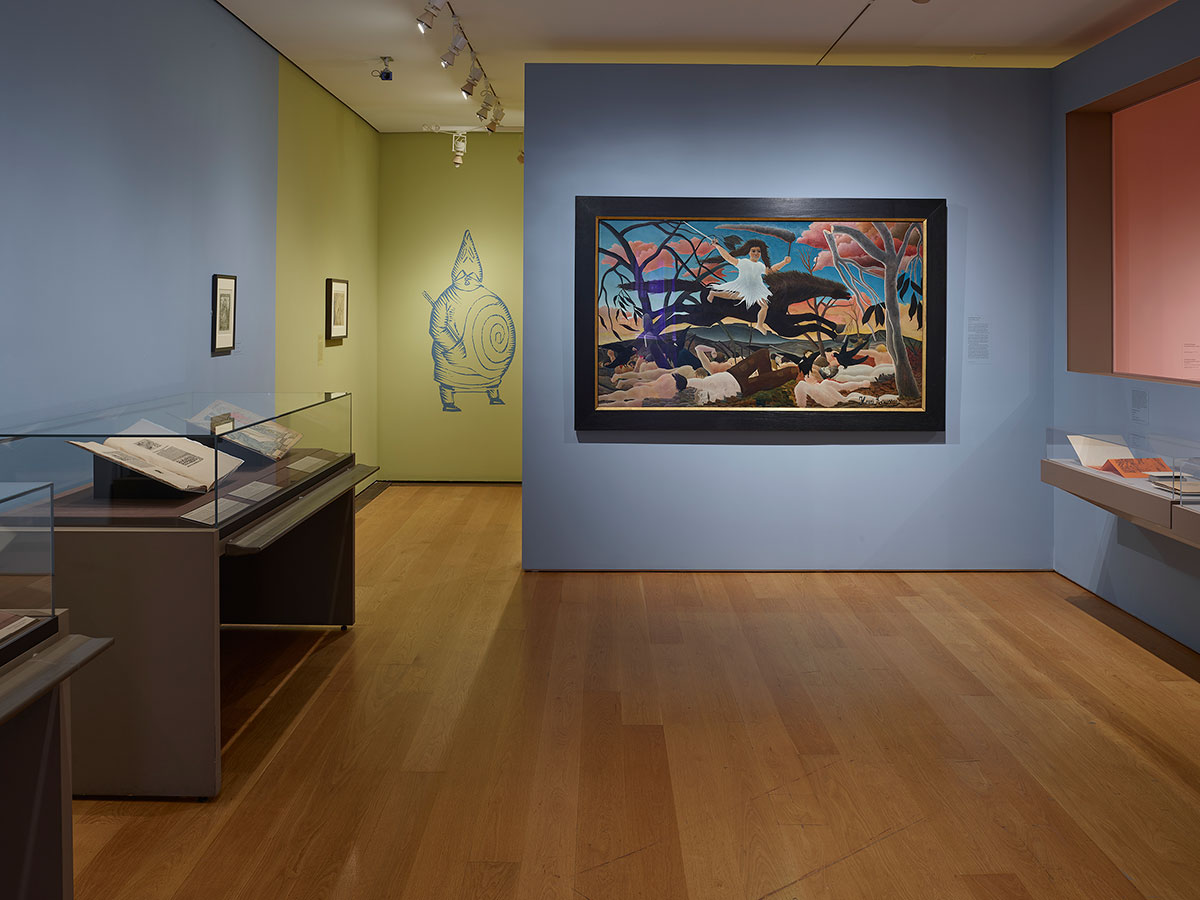
Of H. Rousseau: there is above all “War (terrifying, she passes . . . ).” With legs outstretched the horror- struck steed stretches its neck with its dancer’s head, black leaves inhabit the mauve clouds, and bits of debris fall like pine cones among the translucent corpses of axolotls attacked by bright-beaked crows.
—Alfred Jarry, “Minutes d’art,” 1894
In his singular, independent approach to life and art, Henri Rousseau, much like Jarry, was viewed as sui generis. The painter was also a native of Jarry’s hometown, Laval. They were nearly thirty years apart in age and did not meet until 1894 in Paris. Few artifacts survive attesting to their friendship, although they lived together briefly.
Rousseau’s painting La guerre was the subject of ridicule when it was exhibited in 1894 at the Salon des Indépendants, but it made a significant impact on the twenty-year-old Jarry and inaugurated their friendship. Jarry wrote about the work in two separate articles and also commissioned Rousseau to create a lithograph based on the painting. Jarry’s immediate recognition of Rousseau’s talent and their compatibility became the stuff of legend: Guillaume Apollinaire and others spread apocryphal stories that Jarry “discovered” Rousseau and assigned him the nickname “Le Douanier” (the customs officer).
Henri Rousseau (1844–1910), La guerre, ca. 1894, oil on canvas. Paris, musée d’Orsay. © RMN-Grand Palais / Erich Lessing/ Art Resource, N.Y.
